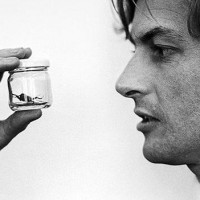Kevin Reads Stuff So You Don't Have To: "An Appetite For Wonder: A Memoir" by Richard Dawkins
“An Appetite for Wonder: The Making of a Scientist: A Memoir”
By Richard Dawkins
Ecco/Harper Collins
As someone who is well familiar with the works of Dr. Dawkins, this memoir made me realize that most Peorians – nay, most Americans – who may be familiar with the genteel doctor may only know of him for his Atheistic stance. After all, that’s what gets ratings and readers these days.
But he’s so much more than “just” a free thinker.
Dawkins is an emeritus fellow of New College, Oxford. For over 40 years he has been at the forefront Ethology – the study of animal behavior – as well as Evolutionary Biology (the two kind of go hand in hand).
If a scientist can “burst” onto the public scene, Dawkins did just that when his first book, “The Selfish Gene,” was published in 1976. The book became an instant (and ongoing) best seller thanks in part to Dawkins’s approach to genetically based evolution, a position which has become universally accepted.
He also introduced a word that has also been universally accepted as well. But first, to the cricket research.
In the late ‘60s, along with his research in Ethology, Dawkins found himself taken with computers. More specifically, computer programming. Over the years, Dawkins became addicted to creating programs and languages, which he would use in aid of his ethology experiments.
One of those experiments involved the mating songs of crickets (long story, don’t ask) in 1973. Dawkins created a computer language (STRIDUL-8) that made his PDP-8 computer “sing” like a cricket. He used these computer-generated courtship songs in his tests.
But then tragedy struck. Or, more accurately, power outages struck. A power cut was instituted throughout England due to a nationwide coal miner strike.
Since his work required electricity, he decided to set his cricket research aside to start writing a book he had been noodling with since his days delivering undergraduate lectures.
He wrote the first chapter of “The Selfish Gene” and then promptly set it aside. Why? The industrial unrest had subsided and the lights were back on – back to his crickets.
Of course by 1976, with his cricket research concluded, Dawkins would complete “The Selfish Gene,” which introduced the world to the concept of a meme:
The new (primordial) soup is the soup of human culture. We need a name for the new replicator, a noun which conveys the idea of a unit of cultural transmission, or a unit of imitation. ‘Mimeme’ comes from a suitable Greek root, but I want a monosyllable that sounds a bit like ‘gene’. I hope my classicist friends will forgive me if I abbreviate mimeme to meme…
Examples of memes are tunes, ideas, catchphrases, clothes fashions, ways of making pots or of building arches. Just as genes propagate themselves in the gene pool by leaping from body to body via sperm or eggs, so memes propagate themselves in the meme pool by leaping from brain to brain, via a process which, in the broad sense, can be called imitation.
In his memoir you will find very little about Dr. Dawkins’s atheistic ways because, as I said, he is a scientist first and foremost. He grew up in what many would call a typical manner of someone whose father was employed in the British colonial service. Which meant a life in either India or Africa. In Richard’s case, it was Africa. He was born in Kenya where his father was working, and spent his early youth tromping the African jungles with his younger sister and mother.
At the age of 13, he was shipped off to school in England, while his father inherited an English country estate, which he turned into a commercial farm. Dawkins toyed with the idea of becoming a gentleman farmer and was always very interested in animal behavior – not surprising for a childhood in the jungles and on the Cotswolds – which led to his lifelong dedication to Ethology and Evolutionary Biology.
Dawkins has been widely praised for being able to make science interesting to the non-scientific reader – and this memoir underscores that mastery. He knows when to dive in deeply into a scientific subject as well as when to skim the surface so as not to confuse the common reader.
While I heartily stand in Dawkins’s corner in terms of freethinking, I was very glad to see the good doctor avoid the subject in his memoir. It would undoubtedly have softened the focus on his groundbreaking scientific work in animal behavior and evolutionary biology.
Case in point: In a recent interview with Bill Maher promoting the memoir, the primary topic Maher was interested in discussing was Dawkins’s life in the Anglican Church before he became an atheist – all of which had passed by the time Dawkins was a teenager.
Trust me, there’s a lot more to Richard Dawkins than just his youth spent as a believer – what Dawkins himself calls a “typical Anglican upbringing.” And page after page of this memoir provides evidence of just that.

